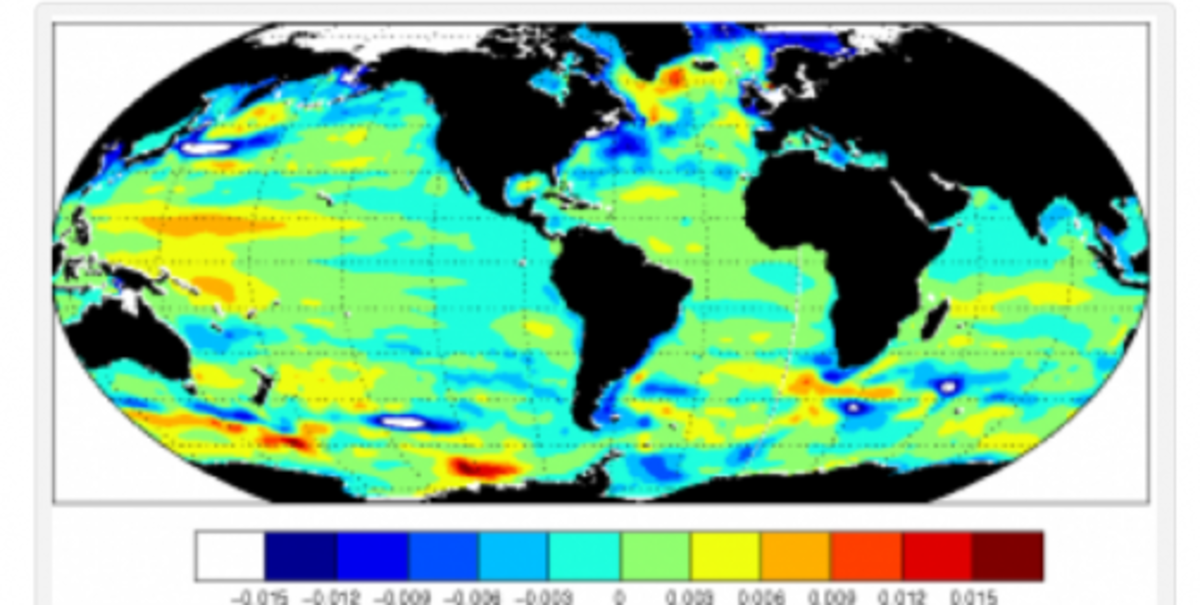Estimating The Circulation And Climate Of the Ocean
Understanding the ways in which the ocean interacts with the remainder of the climate system is one of the most interesting and challenging of scientific problems.

Figure 1: Estimated trends, in meters/year, of sea level (with the global mean of about 0.002m/y removed), and showing how complex sea level change is. In places, regional estimates can be more than five times bigger than the global average. The estimate was made by combining the MIT ocean general circulation model (MITgcm) with more than 1 billion oceanic observations of all kinds over the period 1992 to 2007.
The time evolving ocean state influences and is being influenced the climate and its changes we experience through time. Understanding the ways in which the ocean interacts with the remainder of the climate system—including the atmosphere, cryosphere, and biosphere—is one of the most interesting and challenging of scientific problems. These changes are so important that scientists at MIT and its partners at WHOI and elsewhere bring to bear all of the available tools required to study the system: observations at sea, and from satellites, theory, statistics, and models ranging from the analytical to some of the largest and most sophisticated of any computer model in any field.
A major goal of oceanography is to combine all of the theoretical understanding we have about how a global fluid behaves with all of the observations pertaining to it in order to obtain as complete as possible a picture on how the ocean circulation varies. For anyone trying to understand climate, that means using the best ocean general circulation models, the best models of sea ice—which has a major high latitude influence on the ocean, and the best available estimates of the interacting meteorological fields. A consortium known as ECCO (Estimating the Circulation and Climate of the Ocean) has been producing both global and high resolution estimates of the ocean circulation using the MITgcm, as well as almost all of the data available for the ocean, beginning in 1992. Many published papers and completed theses have discussed the wide utility of these calculations. In particular, they permit one to estimate the important ocean transports of heat (enthalpy), freshwater, oxygen, and nutrients, and such geophysically important influences as the rotation of the Earth and the response of the continental ice sheets.
Together with colleagues at NASA's Jet Propulsion Laboratory (JPL) MIT researchers have entered a new phase - ECCO2 - to tackle high-resolution ocean and sea ice data synthesis.